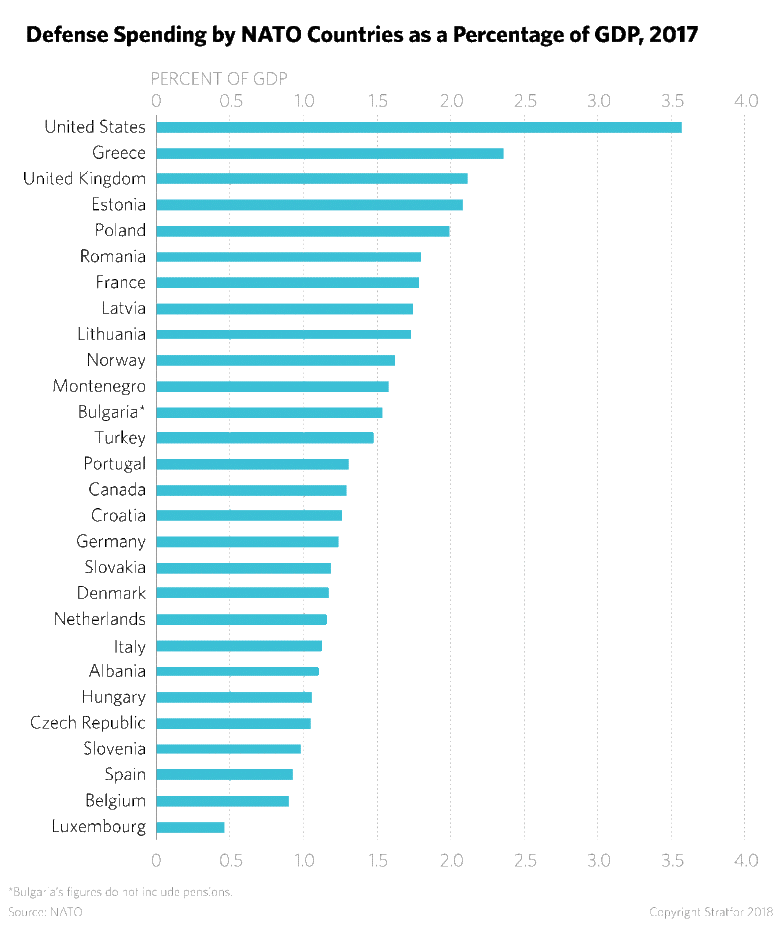This, via Stratfor, illustrate the level of commitment and its nature of NATO member nations toward their own defense. The first shows the breakdown of expenditures of those monies aimed at each member’s commitment to spend 2% of GDP on defense.
Notice who’s spending the most on equipment—that actual teeth of defense. Most of the nations spending the most are right across the fence from the Russian Bear.
This graph shows which nations actually are meeting their 2% commitment.
In case the note is unreadable, the asterisk for Bulgaria notes that its figure does “not include persons.”
There are four nations that didn’t meet their 2% commitment in 2017, but that are expected to meet it in 2018: Poland (which was very close in 2017), Romania, Latvia, and Lithuania. France, which was nearly as close to its commitment as were Romania and Latvia, will not meet its commitment in 2018. Germany, well down the list, isn’t even trying.
